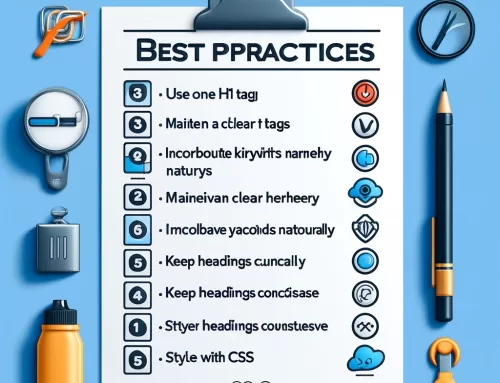Introduction

Keyword research is the foundation of any successful SEO strategy. By understanding the terms and phrases your target audience uses to search for information, products, or services, you can optimize your content to rank higher in search engine results pages (SERPs). This guide will walk you through the process of conducting keyword research, including the tools and techniques you need to succeed.
Table of Contents
Importance of Keyword Research
Keyword research is crucial because it helps you understand what your audience is looking for and how they are searching for it. By identifying the right keywords, you can create content that meets their needs and drives organic traffic to your website. Effective keyword research can also help you identify new opportunities, track trends, and stay ahead of the competition.
Understanding the intent behind keywords is essential. Keywords can be informational (seeking information), navigational (looking for a specific website), or transactional (intent to make a purchase). By identifying the intent, you can tailor your content to match what users are looking for, thus increasing the chances of converting visitors into customers.
Moreover, keyword research aids in discovering the language and terms your target audience uses. This ensures your content speaks directly to them, making it more relatable and increasing engagement. It also helps in structuring your content to address specific questions or pain points, enhancing its value and relevance.
For a deeper understanding of how to structure your content effectively, refer to our guide on How to Use Heading Tags for SEO: Best Practices.
Keyword Research Tools

There are numerous tools available to assist with keyword research. Some popular options include:
- Google Keyword Planner: A free tool that helps you find keywords related to your business and see estimates of the searches they receive. It’s particularly useful for finding new keywords and getting search volume data.
- Ahrefs: A comprehensive SEO tool that offers keyword research, backlink analysis, and more. Ahrefs provides extensive data on keyword difficulty, search volume, and even competitor keywords, helping you find high-potential keywords.
- SEMrush: An all-in-one marketing tool that provides keyword research, site audits, and competitor analysis. SEMrush is excellent for identifying keyword opportunities, tracking keyword performance, and analyzing competitors.
- Ubersuggest: A free keyword research tool that provides keyword suggestions, search volume, and competition data. It’s user-friendly and great for beginners, offering insights into long-tail keywords and content ideas.
Using these tools effectively requires a strategic approach. Start with a broad list of seed keywords and use the tools to expand your list, analyze search volume, and assess competition. These tools can also help you uncover related keywords and long-tail variations, which are often less competitive and more targeted.
Additionally, some tools offer insights into user behavior and trends, allowing you to adapt your strategy to changing search patterns. Regularly updating your keyword research ensures your content remains relevant and continues to attract organic traffic.
Best Practices for Keyword Research

- Start with Seed Keywords: Begin your research with broad terms related to your business or industry. These are your seed keywords. From here, you can expand your list using keyword research tools.
- Analyze Search Volume and Competition: Look for keywords with high search volume and low competition. These are your best opportunities for ranking. Tools like Ahrefs and SEMrush provide valuable data on keyword difficulty and search volume.
- Consider Long-Tail Keywords: Long-tail keywords are more specific phrases that are less competitive and can drive targeted traffic to your site. They often reflect a higher intent to purchase or engage with your content.
- Use Keyword Research Tools: Utilize the tools mentioned above to gather data and find additional keyword opportunities. Each tool offers unique insights that can help you refine your keyword strategy.
- Group Keywords by Topic: Organize your keywords into related groups or clusters. This will help you create comprehensive and relevant content. Topic clusters improve content organization and enhance your site’s internal linking structure.
- Monitor and Update Keywords Regularly: SEO is dynamic, and search trends can change. Regularly review and update your keyword list to stay relevant and competitive. Monitoring keyword performance helps you adjust your strategy to maximize results.
Incorporating these best practices ensures a thorough and effective keyword research process. It helps you stay focused on the most valuable keywords and continuously improve your SEO efforts.
For more tips on enhancing your digital presence, check out our article on Strategic SEO Campaigns – Elevate Your Digital Presence with RedShaw Consulting.
Analyzing Keywords
 Once you have a list of potential keywords, it’s important to analyze them to determine which ones are worth targeting. Consider the following factors:
Once you have a list of potential keywords, it’s important to analyze them to determine which ones are worth targeting. Consider the following factors:
- Search Intent: Understand the intent behind the keyword. Are users looking for information, products, or services? Matching your content to the search intent increases its relevance and effectiveness.
- Relevance: Ensure the keyword is relevant to your business and content. Irrelevant keywords can attract unqualified traffic and hurt your site’s performance.
- Search Volume: Check the average number of searches the keyword receives each month. High search volume indicates a popular keyword, but balance it with competition and relevance.
- Competition: Evaluate how difficult it will be to rank for the keyword based on the competition. Keywords with high competition require more effort and resources to rank.
- Current Rankings: See where you currently rank for the keyword and identify opportunities for improvement. Tracking your current rankings helps you understand your progress and make data-driven adjustments.
Analyzing keywords is an ongoing process. As you publish content and monitor its performance, you’ll gain insights into which keywords are driving traffic and conversions. Use this data to refine your strategy, focusing on high-performing keywords and identifying new opportunities for growth.
Additionally, consider the competitive landscape. Analyze the top-ranking pages for your target keywords to understand what makes them successful. Look at factors like content quality, keyword usage, backlinks, and user experience. This analysis can help you create content that not only matches but exceeds the quality of existing top-ranking pages.
Conclusion
Keyword research is an essential component of any successful SEO strategy. By understanding and targeting the right keywords, you can drive more organic traffic to your website and improve your search engine rankings. Utilize the tools and techniques discussed in this guide to conduct effective keyword research and set your SEO efforts up for success.
Remember, SEO is an ongoing process. Regularly update your keyword research, monitor your performance, and adjust your strategy based on data and insights. By staying proactive and adaptable, you can maintain and improve your website’s visibility in search engine results, ensuring long-term success.




